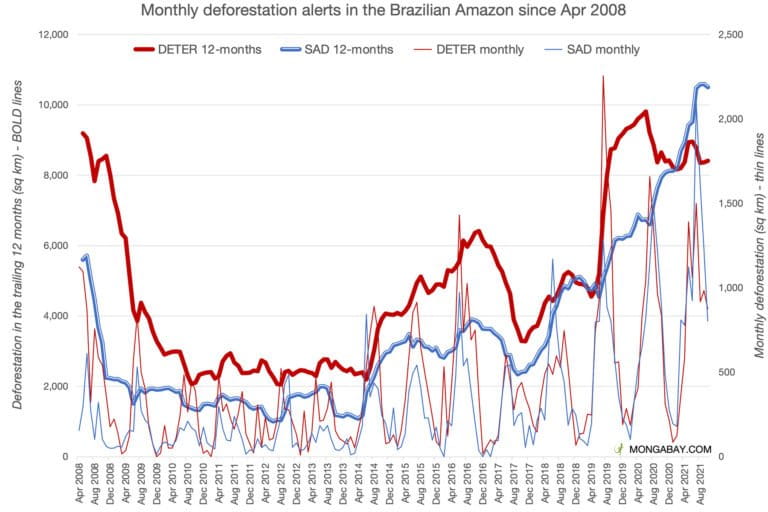- Deforestation in the Brazilian Amazon amounted to 312 sq km in March, a 15% decline over March 2021.
- Despite the drop however, deforestation for the first quarter of 2022 reached 941 square kilometers, the highest level for a first quarter since 2018.
- Deforestation in the Brazilian Amazon has been trending higher since 2012.
- The Brazilian Amazon accounts for nearly two-thirds of the Amazon rainforest.
Deforestation in the Brazilian Amazon dipped slightly in March, but forest loss in Earth’s largest rainforest is still pacing well ahead of the rate seen in recent years.
According to data released today by Brazil’s national space research institute INPE, deforestation across the Brazilian Amazon amounted to 312 square kilometers (120 square miles), a 15% decline relative to March 2021. Nevertheless clearing during so far in 2022 stands at the highest level for the first quarter in the year since 2018.


Deforestation in the Brazilian Amazon has been trending upward since 2012. Forest loss has accelerated sharply since President Jair Bolsonaro took office in January 2019, with last year’s level of deforestation hitting the highest mark since 2006.
Scientists are concerned that ongoing deforestation and the warming and drying effects of climate change are driving the Amazon toward a tipping point where vast areas of rainforest shift to wooded savanna. Such a transition would trigger large-scale carbon emissions, disrupt rainfall patterns at local and regional levels, and could usher in mass extinction of species.
Header image: Forest fire in a deforested area in an undesignated public forest in Porto Velho, Rondônia on July 29, 2021. Photo © Christian Braga / Greenpeace
